On June 17, 1898, 125 years ago, a young Jewish German archaeologist arrived at Parikia, the capital of the island of Paros, after an exhausting 13-hour voyage from Piraeus. His name was Otto Rubensohn (1867–1964, fig. 1) and his mission was to conduct small-scale excavations on behalf of the DAI Athens. One of his primary goals was to search for fragments of the famed Marmor Parium, an inscribed marble stele chronicling important episodes in the history of the Greek city-states up to 264/263 B.C.E. He would attempt to locate the sanctuaries of Asklepios and Demeter, which were known from inscriptions and references to them in ancient written sources (Barlou 2015, 29 f.).
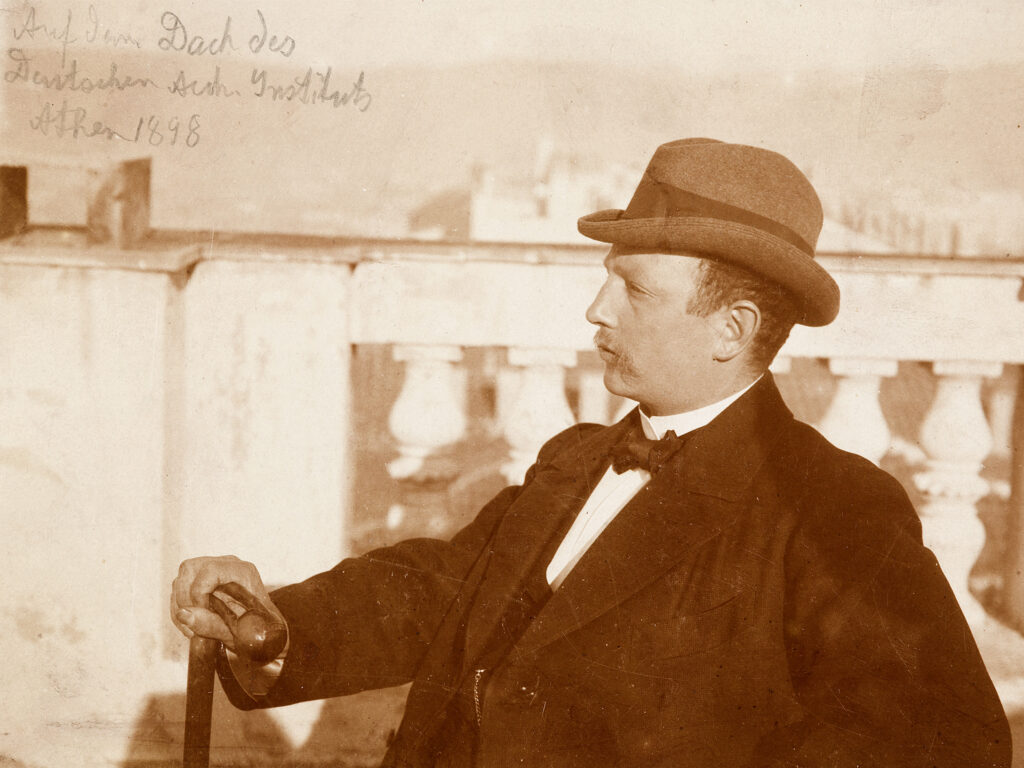
Rubensohn later published extensively on his Paros exploration, but until recently little was known about its background (Barlou 2015, 27. 30). Letters and field journals from Rubensohn’s estate, which was donated to the Jewish Museum Berlin by his son-in-law, Dr. Fortunatus Schnyder-Rubensohn (1915–2016), in 2006, now add important information about his scholarly activity and give a vivid account of Parian society and everyday life at the DAI Athens at the end of the 19th century.
As Rubensohn’s correspondence shows, the man behind his mission was none other than Wilhelm Dörpfeld (1853–1940), the director of the DAI Athens and also Rubensohn’s mentor. 45 years old at the time, Dörpfeld took a particular interest in the enterprise and personally accompanied his younger colleague to Paros (fig. 2). In a letter to his parents, Rubensohn vividly describes their passage on the steamboat “Athena”: “[…] We went on board around 8:30 and found the miserable little rattletrap Athena jam-packed with people. Our loyal factotum Angelis brought the endless baggage on board; Dörpfeld, who brought his own bed, had it set up on deck in the middle of an unspeakable mess – sheep droppings, whining children, dirty Greeks. The ship left Piraeus around 11 o’clock (it was supposed to depart at 8 o’clock). At 12 I climbed down below to my fleas and slept moderately well. Certainly better than Dörpfeld, who was already awake again at 3. By 5 o’clock, I was above deck, too, watched the very necessary cleaning of the rattletrap together with Dörpfeld, and found a place of refuge on the bridge. We reached Syra at 8 o’clock, disembarked, and ate breakfast. We continued on at 9:30. We reached Paros at 12 o’clock. Mr. Crispi came on board to pick us up, a small, fidgety man who speaks an extremely strange German – he learned it from books from the last century […]” (Jewish Museum Berlin, Otto Rubensohn collection, 2006/27/144, letter no. 81, 17.06.1898).
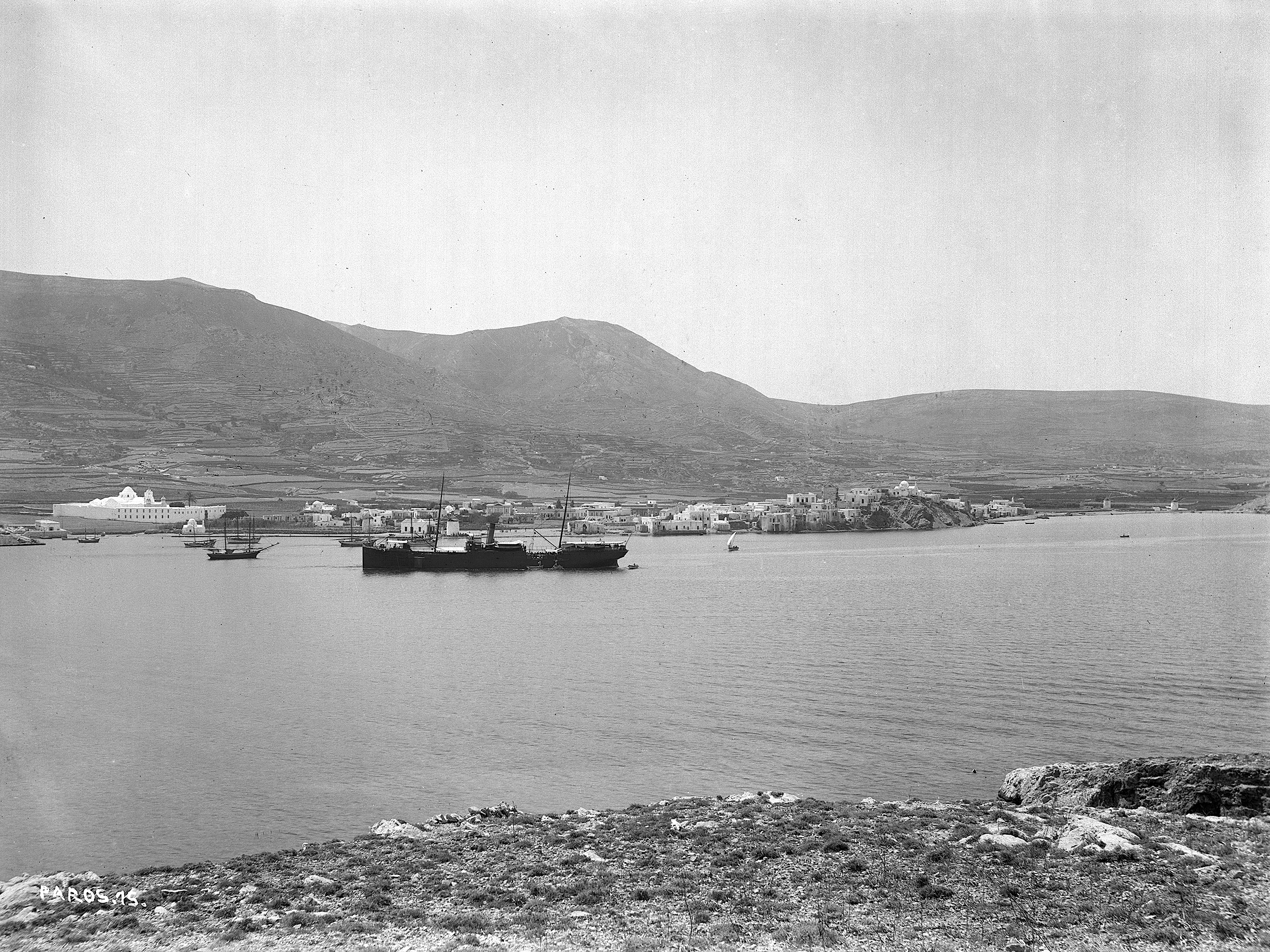
After taking up quarters in Parikia and paying the customary visit to the island’s mayor, Rubensohn and Dörpfeld went on to inspect the property of G. Varouchas in the “Tholos” precinct (fig. 3, below Θολάκια), where a major fragment of the Marmor Parium had been found a year before (1897): “Oh boy. Big disappointment. A giant field, no one knows exactly where the stone was found. Just late medieval ruins, so the piece found had undoubtedly been built into a late building, who knows where the rest were dragged off to. Dörpfeld is also quite despondent” (Jewish Museum Berlin, Otto Rubensohn collection, 2006/27/144, letter no. 81 as above). Nevertheless, they decided to dig a trial trench the next day. In spite of their efforts, their quest was in vain.

In the following days, Rubensohn and Dörpfeld set off together to explore the island’s antiquities. They found the city walls, visited the alleged site of the sanctuary of Asklepios, and the famous marble quarries in the mountainous center of the island. They even began to document the Venetian tower in the heart of Parikia, which was built almost entirely from ancient spolia (fig. 4). On June 23, Dörpfeld had to leave for Santorini, where he continued his work with Wolters and Schiff (Jewish Museum Berlin, Otto Rubensohn collection, 2006/27/144, letter no. 82, 20.–23.06.1898, p. 6). Now Rubensohn was finally the “sole ruler of the marble island”, as he triumphantly wrote to his parents (e.g. Jewish Museum Berlin, Otto Rubensohn collection, 2006/27/144, letter no. 80, 13.06.1898; Barlou 2015, 30).
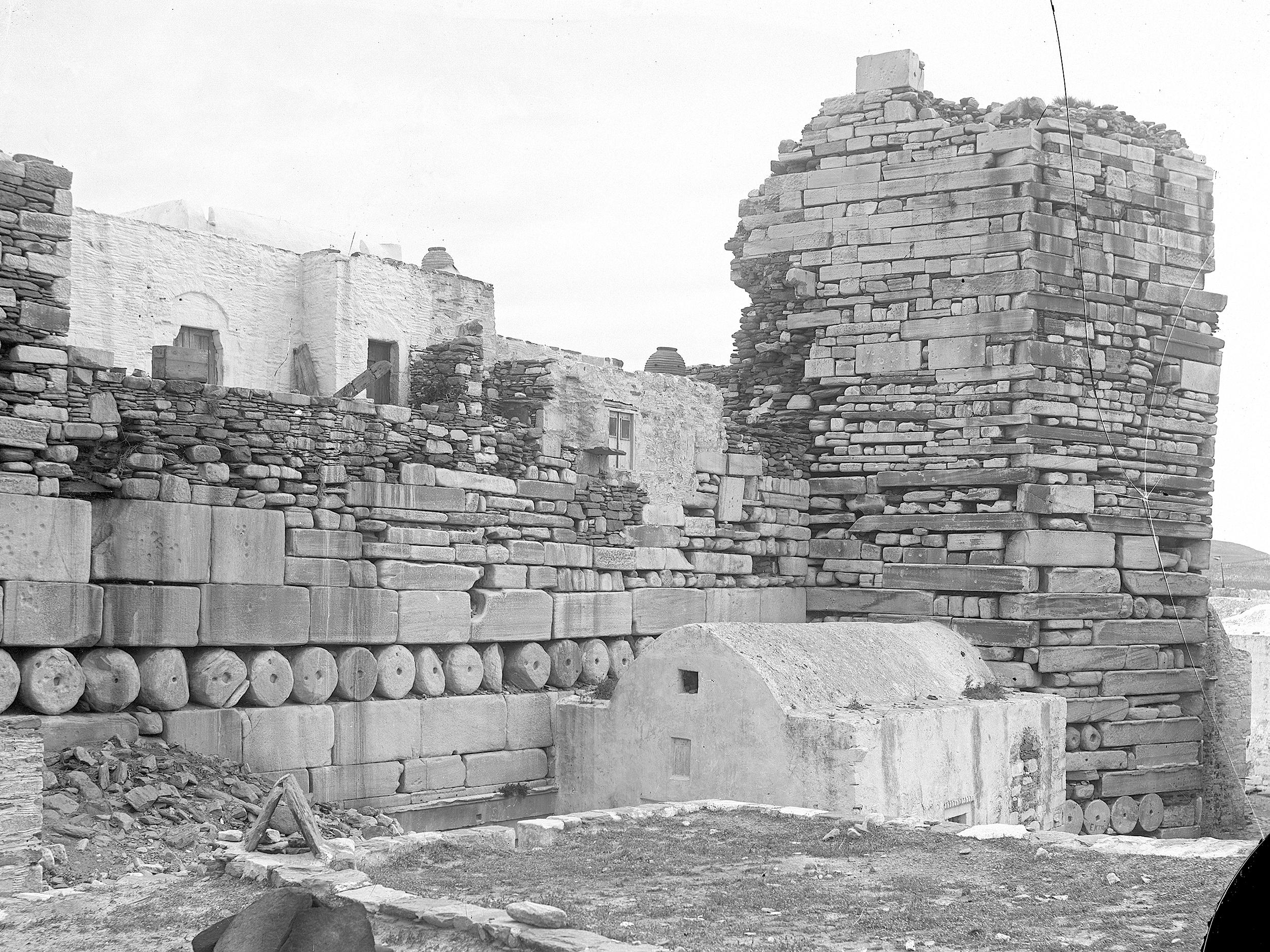
At last free to pursue his own plans, in the following weeks Rubensohn combed the whole island. He delved into its ancient and modern topography, recorded toponyms, collected scattered antiquities and dozens of inscriptions, which he copied in squeezes like the keen philologist that he was. He also extensively photographed the landscape and his finds: more than 270 of his early photographs (glass negatives) are preserved in the photographic archive of the DAI Athens (fig. 5) accessible via iDAI.objects. During this first campaign, Rubensohn excavated some of the most significant monuments of the ancient capital of Paros (fig. 6): the late classical sanctuary of Asklepios with remains of the older Pythion (fig. 3 and 6, no. 13; fig. 7), the archaic temple of Athena at the castle (“phrurion”) of Parikia (fig. 3 and 6, no. 10; fig. 8), parts of the Hellenistic and Roman necropolis at the harbor (fig. 6, no. 6; fig. 9), and several smaller sanctuaries (fig. 6, no. 17. 18; Barlou 2015, 31–33).
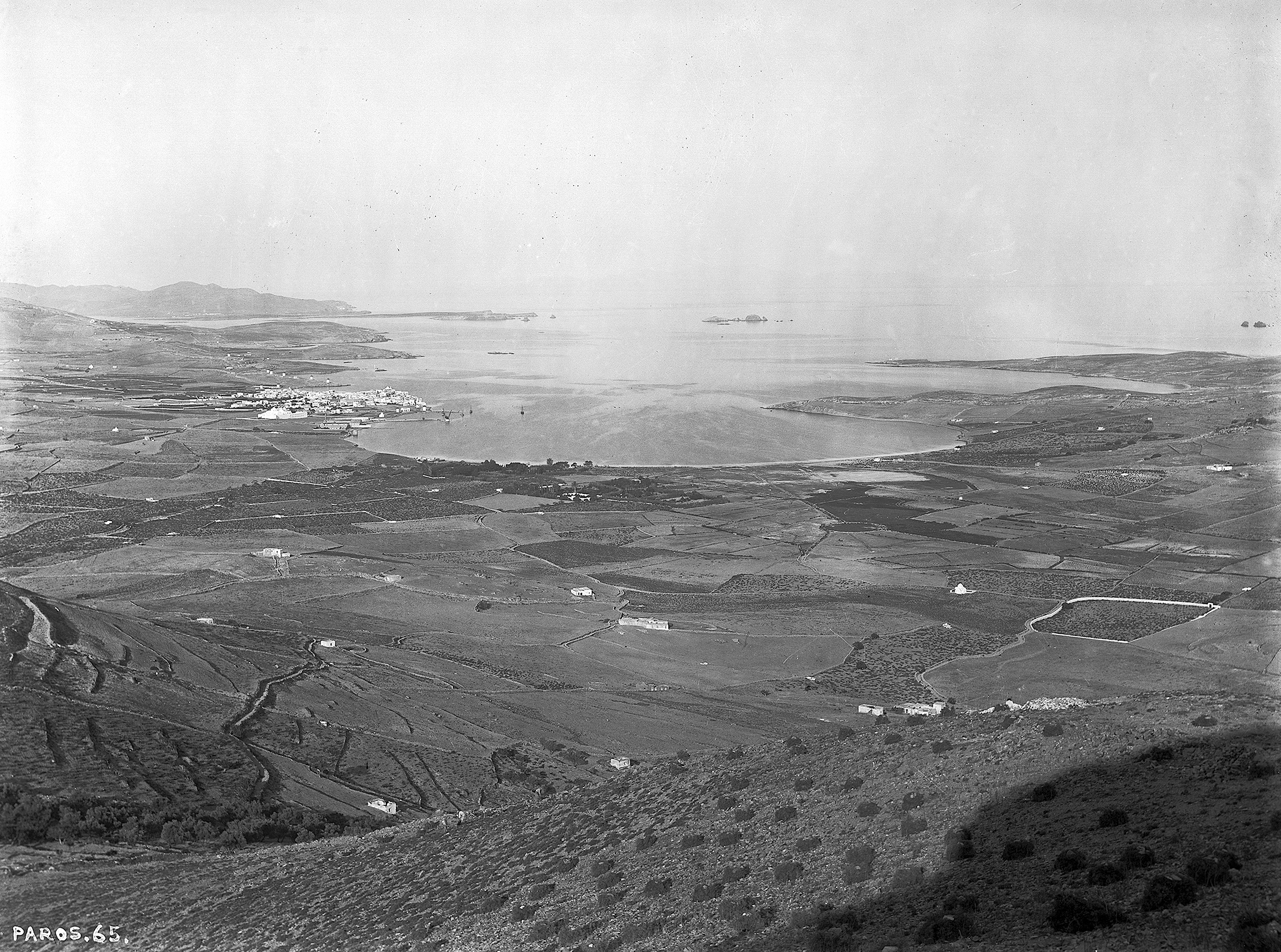

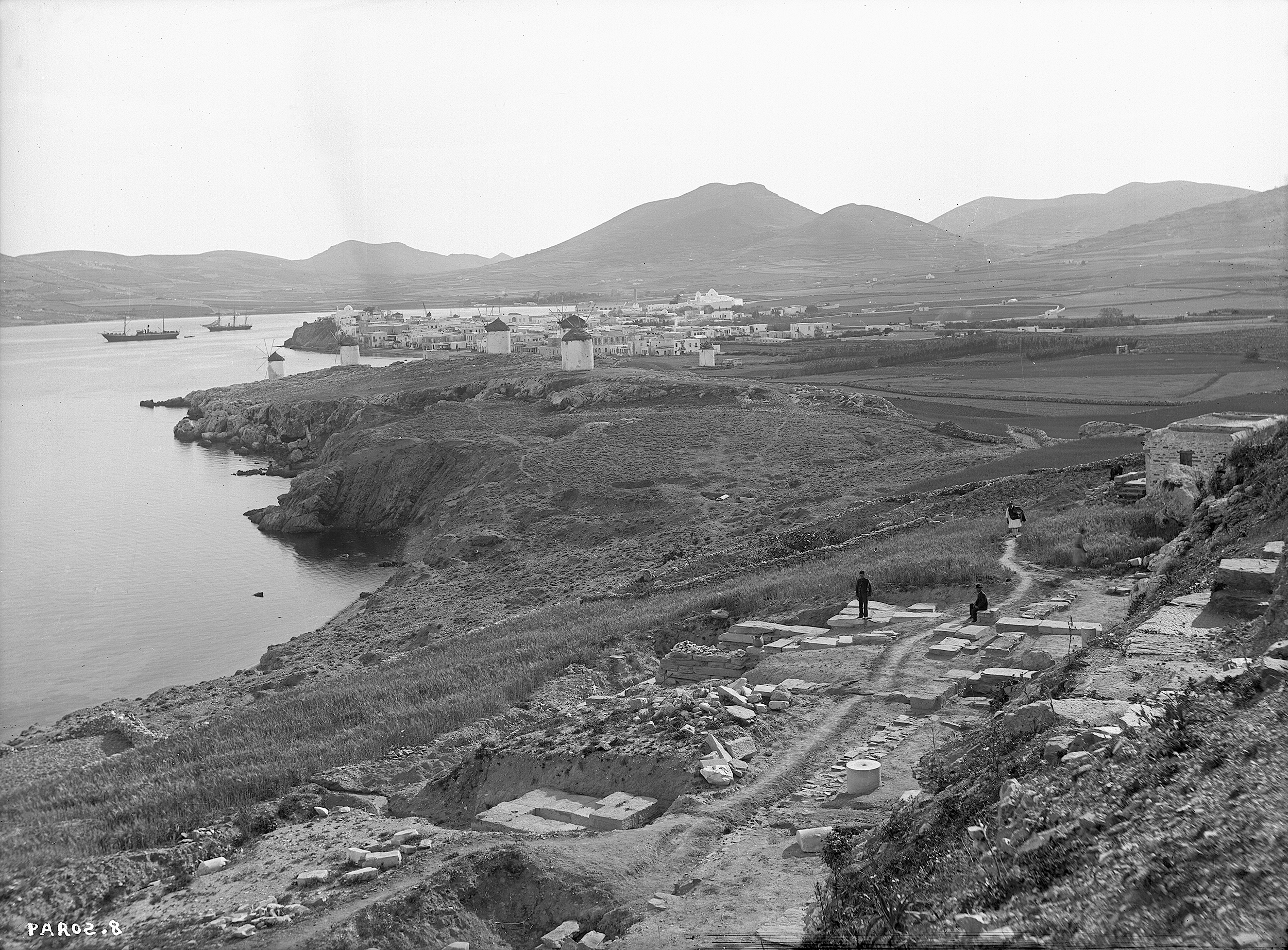
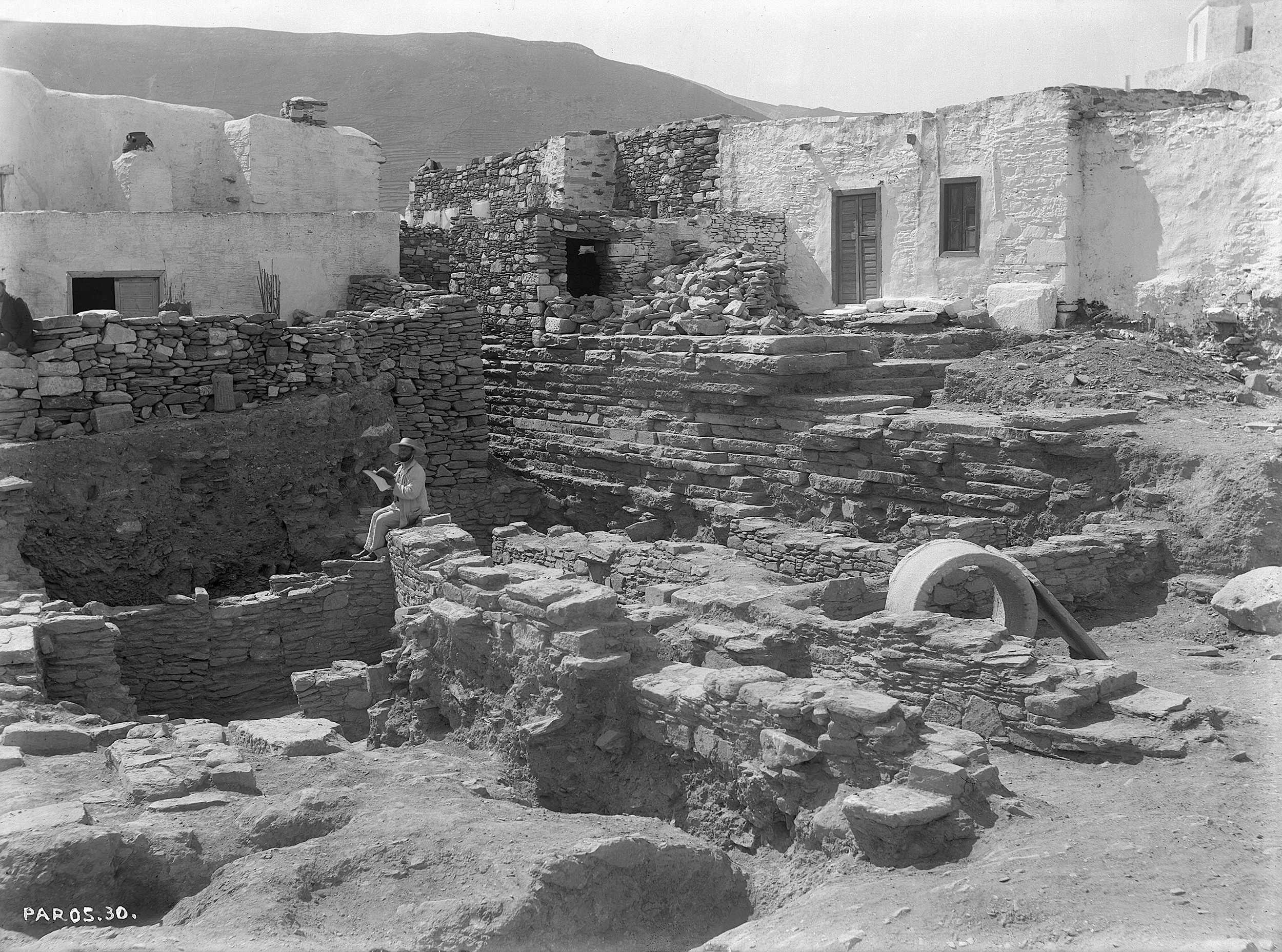
The role of his Greek team members is less acknowledged. Finally, as is evident from his correspondence and field diaries, he also established the first museum on Paros. Thanks to his persistence, the growing archaeological collection was housed in former monks’ cells in the courtyard of the Church of Panagia Hekatontapyliani, called Katapoliani, one of the most important pilgrimage sites in the Cyclades (fig. 9, Barlou 2015, 35f.).
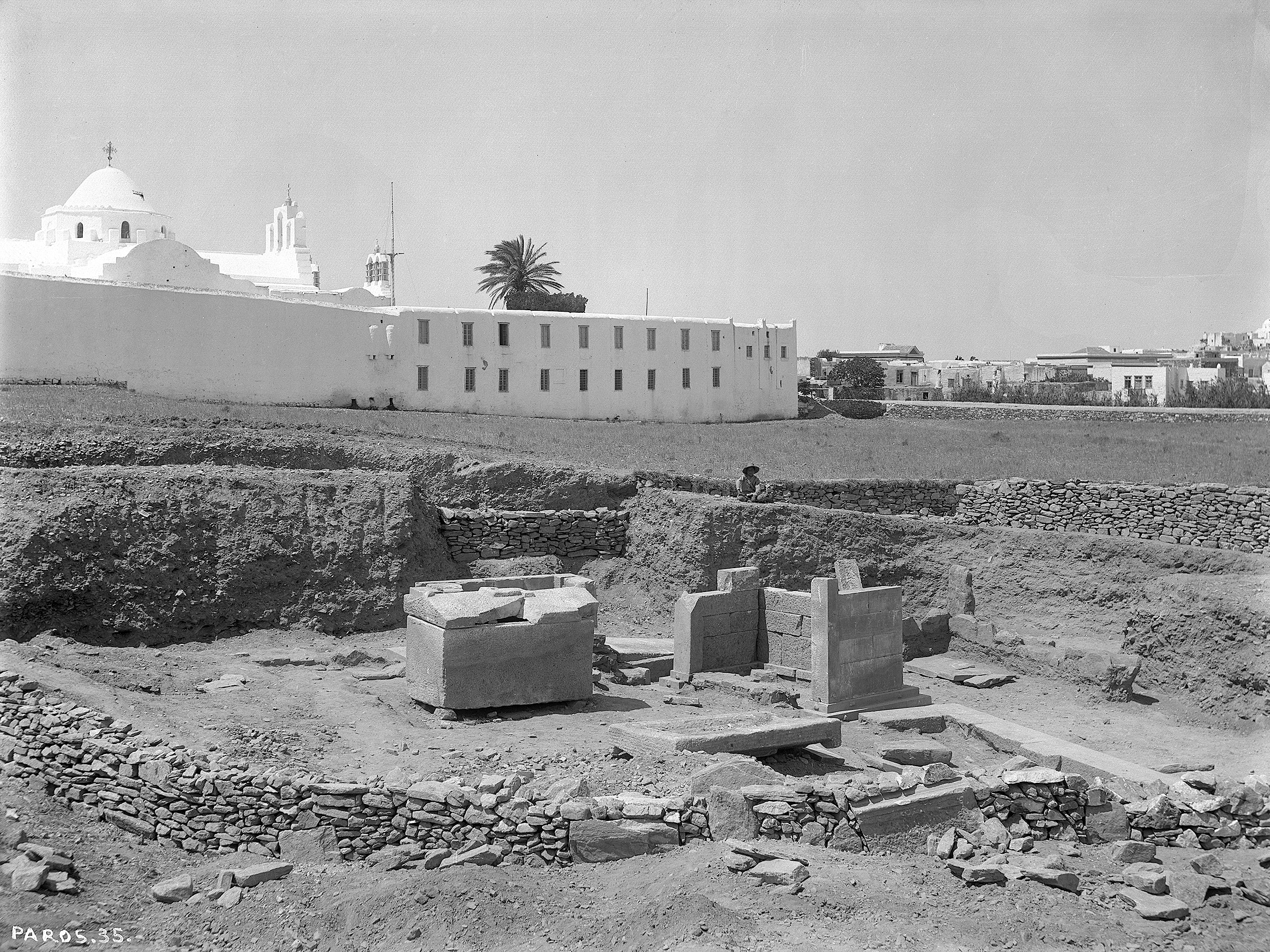
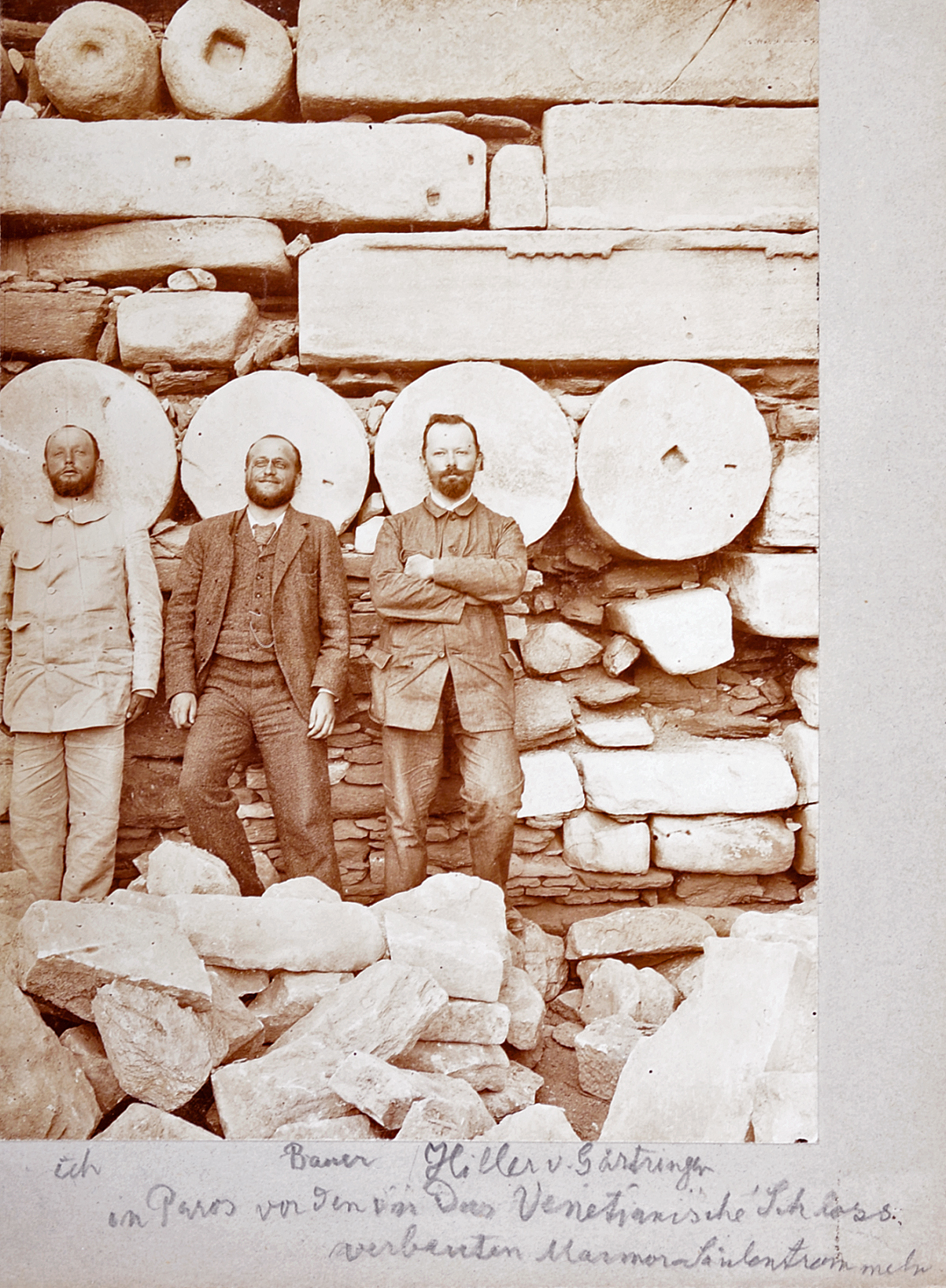
In his endeavors, Rubensohn could count on several well-known friends and fellow archaeologists, including Friedrich Hiller von Gaertingen, Paul Baur (fig. 10) and Robert Zahn (fig. 11). The young Greek architect Panagiotis Sursos (1865–1929), a close collaborator of Dörpfeld’s and architect at the DAI, played an especially decisive part in the scientific outcome of the mission. Sursos drew all the architectural plans, supervised excavations and created the detailed topographic maps that Rubensohn later published (fig. 3 and 6). Frequent mention is also made of the DAI “factotum” Angelis.
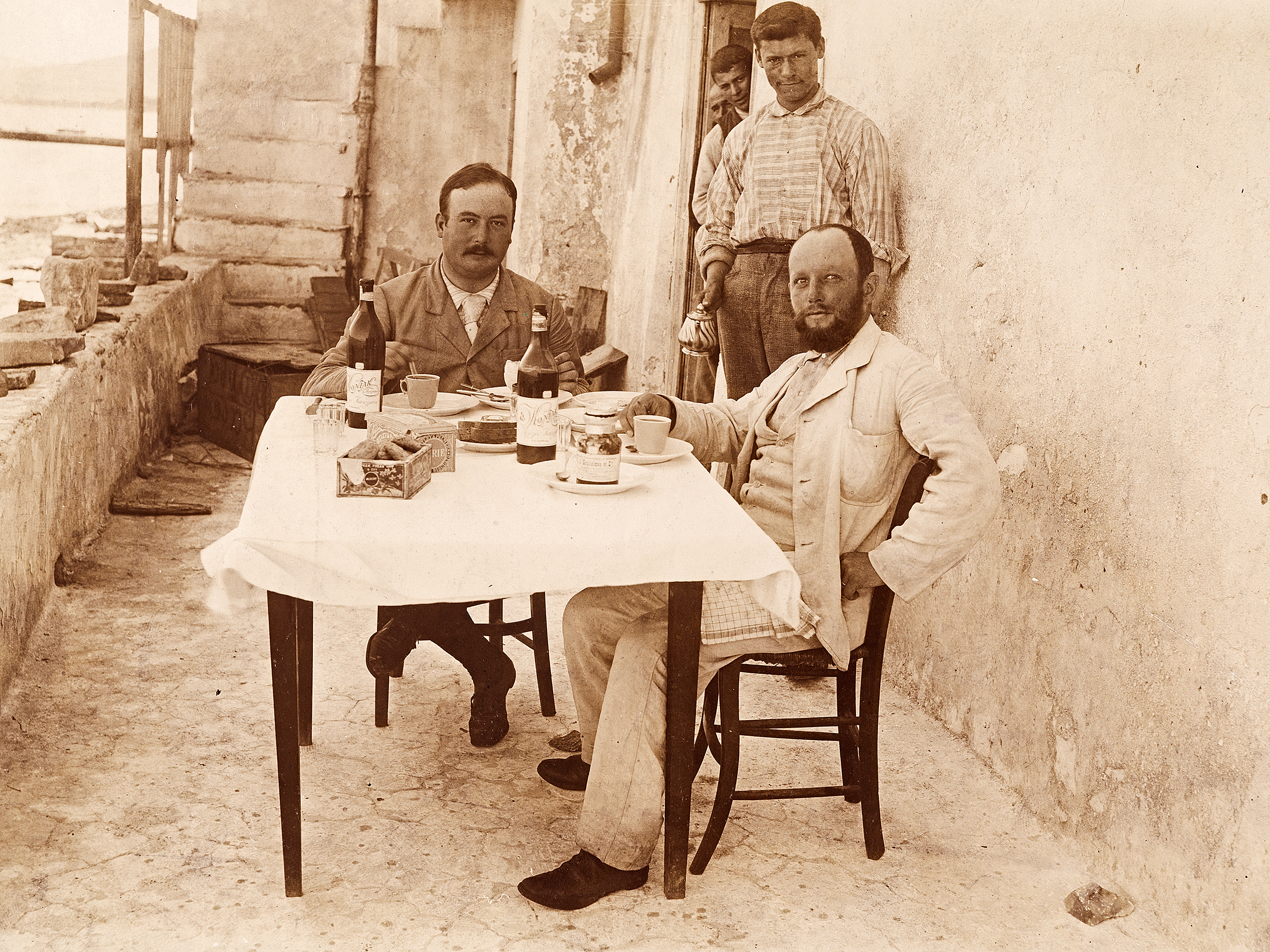
On Dörpfeld’s orders (e.g. Jewish Museum Berlin, Otto Rubensohn collection, 2006/27/144, letter no. 80, 13.6.1898), Angelis stayed with the young Rubensohn, who initially spoke Greek rather poorly, and assisted him in all his everyday affairs, from managing finances to supervising excavations. The following entry from Rubensohn’s field journal (Jewish Museum Berlin, Otto Rubensohn collection, 2006/27/32 “Paros 1899 II” p. 28, fig. 12) gives a direct insight into an ordinary day at the excavations:
“[…] In the evening, Panagiotis comes and complains about the laziness of the workers. Terrible anger over the workers. Nice evening with a full moon. […]
Friday, May 26, 1899
At 5 a.m. off to the excavations of von Hiller, where I stay while Angelis goes out to bring my workers to their senses. Home at 8 o’clock for breakfast, 2nd breakfast then out to the excavations. A geometric shard was found in Hiller’s excavations. The northern section of the old walls was finally completely uncovered outside in the sanctuary of Asklepios; it’s preserved in situ, 8.70m long – 2 layers [illegible] – the rest can be followed along the carved rockface. To the museum at 3 o’clock in the afternoon. Baur keeps digging in the Eileithyia and [illegible]. I start with a precise find journal of the sanctuary of Eileithyia. The terracottas get more and more interesting. Inscription no. 40 (underlined twice, red.) handed over to Hiller for the museum. Afterward, one more time to the sanctuary of Asklepios, where a lead nail with the inscription ΠΥΡ is found. Then home. The most disagreeable south wind all day long. Humid weather. Mail via Naussa just brings newspapers etc.”
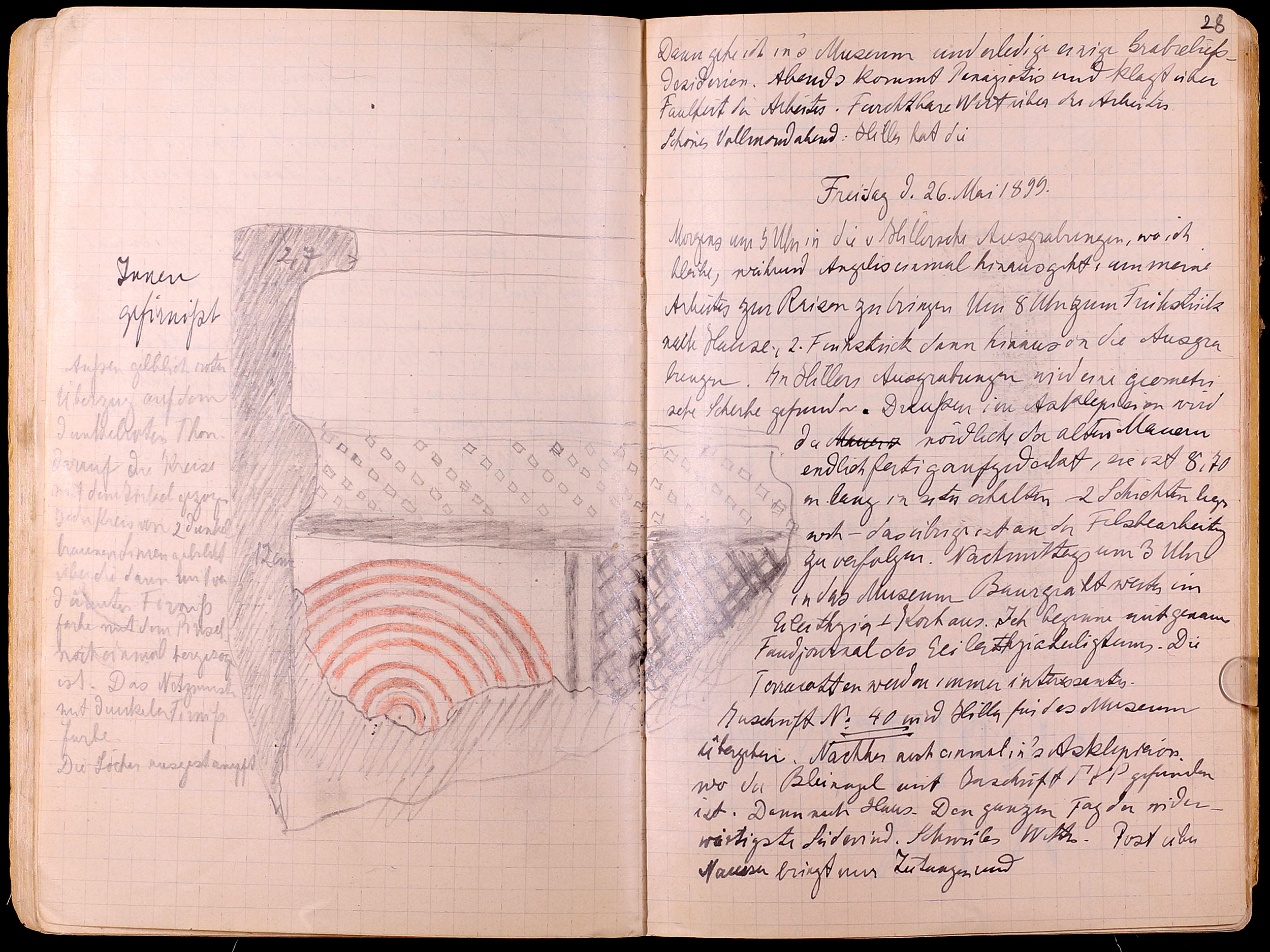
Rubensohn’s successful campaign convinced the DAI to sponsor one more excavation season on Paros in the summer of 1899. During that time, Rubensohn continued his investigations in the Asklepios sanctuary and uncovered a remarkable prehistoric settlement (2nd millennium B.C.E.) under the temple of Athena in the castle area (fig. 8). His most significant discovery, though, was the Delion, a previously unknown sanctuary, situated on top of a hill in the northeastern part of the bay of Parikia (fig. 6 no. 14, fig. 13 and 14). In just six days(!), assisted by twenty-one local workmen, Rubensohn excavated the ruins of an early classical Doric temple, discovering an altar and numerous artefacts dedicated to the goddess Artemis of Delos dating back to the 8th century B.C.E.
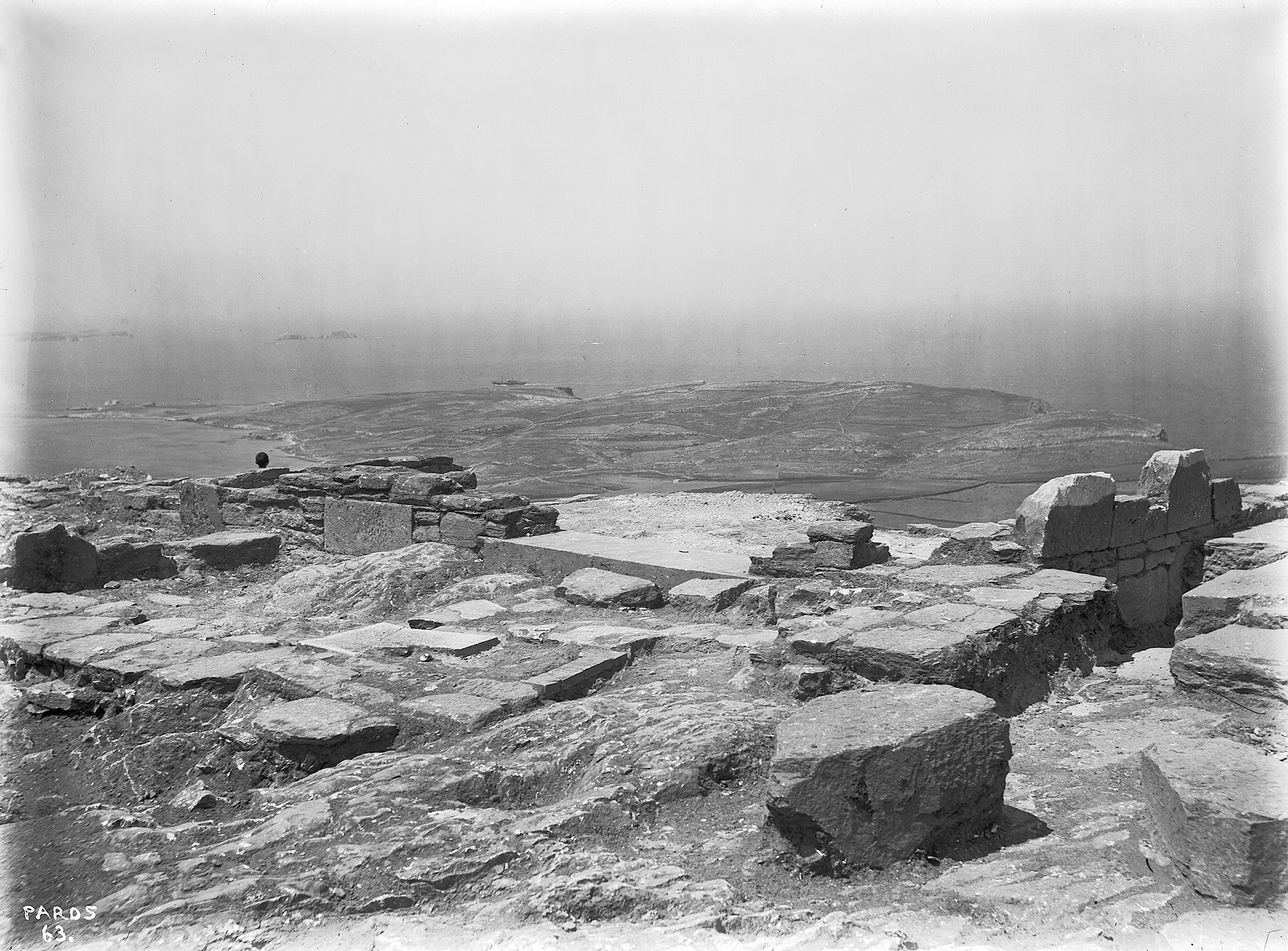
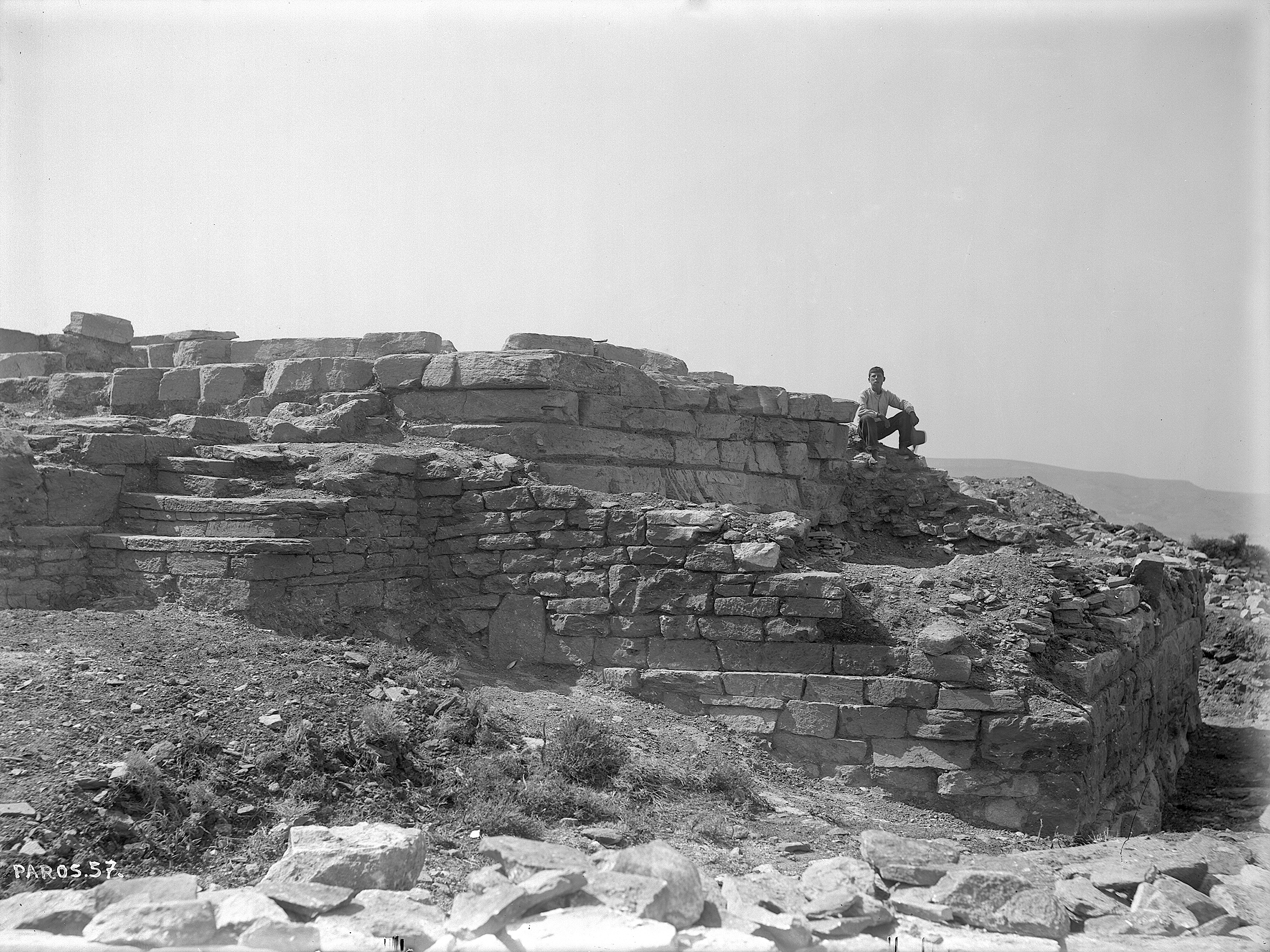
Despite these spectacular results, which received great attention, a permanent position for which Rubensohn had hoped failed to materialize. It was suspected again and again that it had to do with his Jewish identity (cf. Kuckertz 2013, 53; Pomerance 2015, 18). In short order, Rubensohn opted for the security of a teaching career and was about to forsake his archaeological career when, in 1901, he was offered a chance to work in Egypt for several years, excavating and purchasing Greek literary papyri on behalf of the Berlin museums and the papyrus cartel (Kuckertz 2015; Kuckertz 2020, 44–50; Lembke – Pomerance 2016, 41).
In the meantime, Rubensohn completed three extensive articles on Paros, which were published in Athenische Mitteilungen 1900–1902 (Rubensohn 1900, 1901, and 1902). These publications remain milestones for scholarship on the island. His final publication, on the Delion (Rubensohn 1962), however, did not appear until half a century later. This was partly due to Rubensohn’s erratic career: after his detour in Egypt, he returned to teaching in 1907, became a museum director in Hildesheim from 1909 to 1915, and then went back again to teaching in Berlin. To a significant extent, however, the gaps in his scholarly production were caused by the historic events leading up to World War II and beyond. Rubensohn’s own vita reflects the fate of hundreds of thousands of his fellow German Jews – at least those who survived the murderous Nazi regime – who were systematically marginalized and persecuted in the 1930s, and had to rebuild their lives from scratch as exiles and refugees.
In spring 1939, then 72 years old, Rubensohn emigrated at the very last moment to Basel, Switzerland, along with his wife, at the insistence of his daughter and with the help of several friends and colleagues (Pomerance 2015, 20–24). Since they had to leave behind most of their possessions, the family lived on Jewish solidarity funds and especially on the financial support of Mimi Borchardt – wife of the first director of the DAI Kairo, Ludwig Borchardt, both close friends of Rubensohn’s – during the war. Despite his advanced age and harsh experiences, however, Rubensohn remained active in research. In 1949, his article on Paros belatedly appeared in the famous Paulys Realencyclopädie, having been rejected on racial grounds in 1936. In 1962, as a nonagenarian, Rubensohn at last saw the publication of his study on the Delion of Paros. Of all his travels and discoveries, his time in Paros remained his fondest memory (cf. Pomerance 2015, 20 n. 25). With the transfer of his estate to the Jewish Museum Berlin and the digitalization of the archives of the DAI Athens, his research can now be fully appreciated and continued.
Acknowledgements:
I especially wish to thank Katja Sporn and Katharina Brandt for inviting me to contribute to this highly informative and entertaining scholarly blog. Aubrey Pomerance and Birgit Maurer-Porat (Jewish Museum Berlin) generously provided access to archival material and photos. Otto Rubensohn’s grandson, Thomas Schnyder-Rubensohn (Zurich), was quick to help with permissions and information. To all of them un grand merci.
Works cited and further reading:
Barlou 2015
V. Barlou, “…am Ort meiner Bestimmung” – Otto Rubensohns Forschungen auf Paros, in: A. Pomerance – B. Schmitz (eds.), Heiligtümer, Papyri und geflügelte Göttinnen. Der Archäologe Otto Rubensohn (Hildesheim 2015) 24–37
Barlou 2022
V. Barlou, The German Archaeological Institute and the first extensive excavations in Paros, in: N. Biza (ed.), Photographic material from the archive of the German Archaeological Institute of Athens. Exhibition catalogue, 5th Paros Festival 8–10 July 2022 (Paros 2022) s. p.
Kuckertz 2013
J. Kuckertz, Otto Rubensohn (1867–1964), in: M. Capasso (ed.), Hermae. Scholars and Scholarship in Papyrology III (Pisa 2013) 41–56
Kuckertz 2015
J. Kuckertz, Auf der Jagd nach Papyri. Otto Rubensohn in Ägypten, in: A. Pomerance – B. Schmitz (eds.), Heiligtümer, Papyri und geflügelte Göttinnen. Der Archäologe Otto Rubensohn (Hildesheim 2015) 40–59
Kuckertz 2020
J. Kuckertz, Otto Rubensohn (1867–1964). Der Auftrag: Griechisch-literarische Papyri aus Ägypten, in: J. H. Schoeps – T. L. Gertzen (eds.), Grenzgänger. Jüdische Wissenschaftler, Träumer und Abenteurer zwischen Orient und Okzident (Berlin 2020) 35–71
Lembke – Pomerance 2016
K. Lembke – A. Pomerance, Otto Rubensohn (1867–1964), in: G. Brands – M. Maischberger (eds.), Lebensbilder. Klassische Archäologen und der Nationalsozialismus (Rahden/Westfahlen 2016) 39–54
Pomerance 2015
A. Pomerance, Otto Rubensohn. Eine biografische Skizze, in: A. Pomerance – B. Schmitz (eds.), Heiligtümer, Papyri und geflügelte Göttinnen. Der Archäologe Otto Rubensohn (Hildesheim 2015) 12–25
Rubensohn 1900
O. Rubensohn, Paros I, AM 25, 1900, 341–372
Rubensohn 1901
O. Rubensohn, Paros II, AM 26, 1901, 157–222
Rubensohn 1902
O. Rubensohn, Paros III. Pythion und Asklepieion, AM 27, 1902, 189–238
Rubensohn 1962
O. Rubensohn, Das Delion von Paros (Wiesbaden 1962)
Schefold 1988
K. Schefold, Otto Rubensohn, in: R. Lullies – W. Schiering (eds.), Archäologenbildnisse. Porträts und Kurzbiographien von Klassischen Archäologen deutscher Sprache (Mainz 1988) 166 f.
